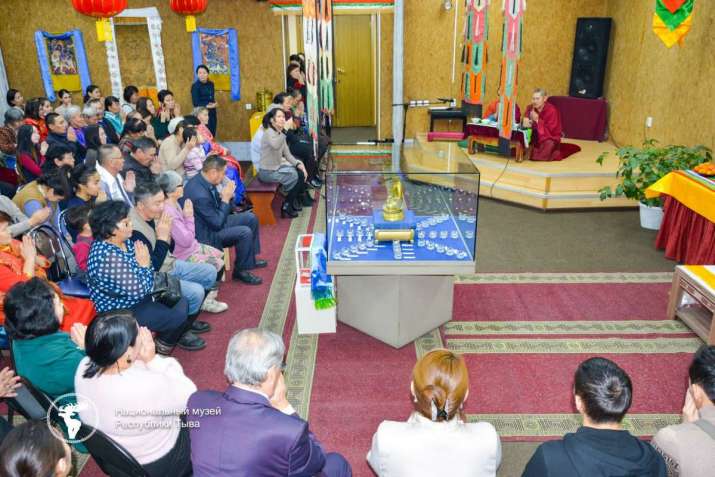
SOFIA—An exhibition titled Sacred Relics opened in the conference hall of the National Museum of the Republic of Tuva Named Aldan-Maadyr (The Sixty Warriors).
The National Museum of Tuva, was found in the capital Kyzyl in 1924 and opened to the public in 1930. Parts of its collection were donated to the museum by the Hermitage and other Russian museums and collections. Among others, It houses a collection on the history of the people of Tuva and a permanent Buddhist collection. During the last few years, the museum has established a tradition of hosting the Sacred Relics exhibition as part of celebrations for the Tuvan New Year, known in Tuvan as Shagaa (White Month).*
This year, the exhibition was opened on 22 January by museum director Kaadyr-ool Bicheldey and Lobsan Chamzy, the khamby lama (senior lama) of the Russian republic.
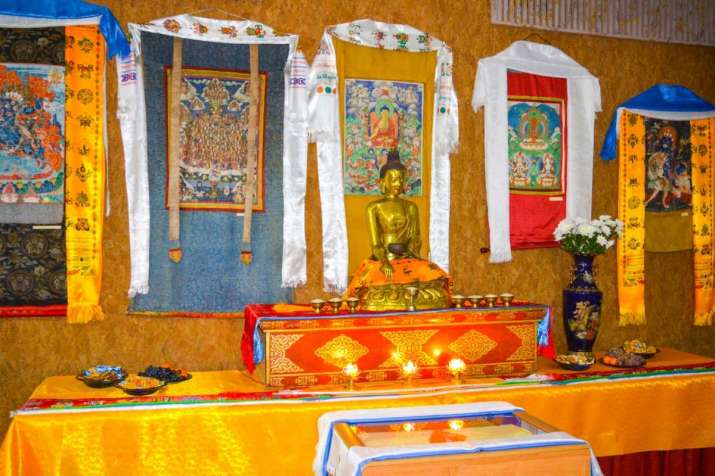
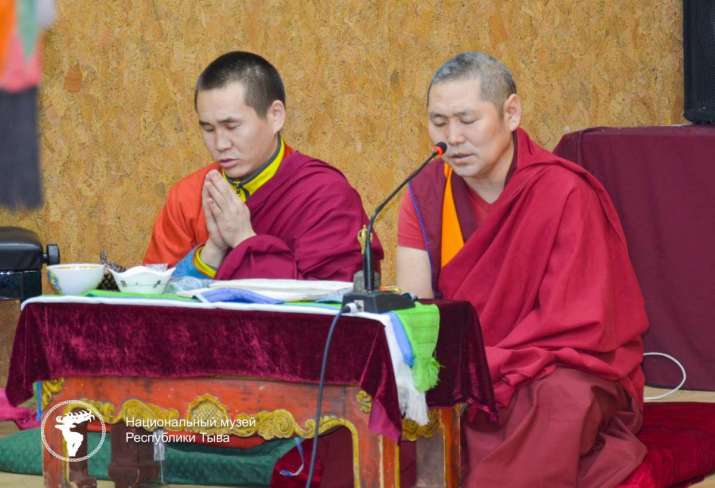
The sacred relics on display were found in 2009 by Lobsan Chamzy during the restoration of the museum’s collections. He was invited to systematize the sutras and to make a list of the Buddhist artifacts stored there. He and other monks spent seven months cleaning and organizing the collection with the help of museum staff and volunteers. In the head of one of the Buddha’s statues they found an opening containing sacred relics of ashes, hair, earth, and clothing of Buddhist teachers. The monks described this discovery as a miracle, comparable to the appearance of a Buddhist teacher.
Tibetan inscriptions that were also found inside the statue revealed their origin: the ashes were preserved after the cremation of the Buddha’s body; the piece of a monk’s robe belonged to the great Tibetan teacher Je Tsongkhapa (1357–1419), founder of Gelug school of Tibetan Buddhism, the handful of earth was gathered from the place where Tsongkhapa was meditating, another piece of cloth belonged to Bogd Gegen (Holy Emperor) VIII, and the fragments of bone and hair were said to belong to the scholar and meditation master Naropa (956–1040), founder of the Kagyu school. A total of 36 relics were found in the statue. Representatives of the administration of the khamby lama suggested that the statue might have belonged to the supreme lama of pre-revolutionary Tuva.
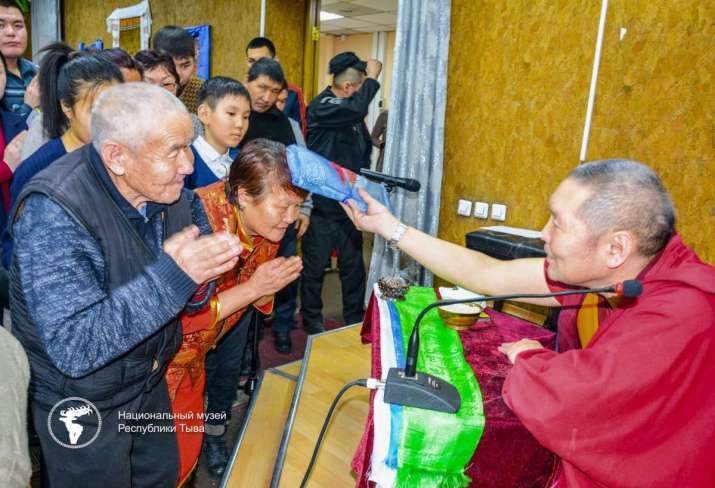
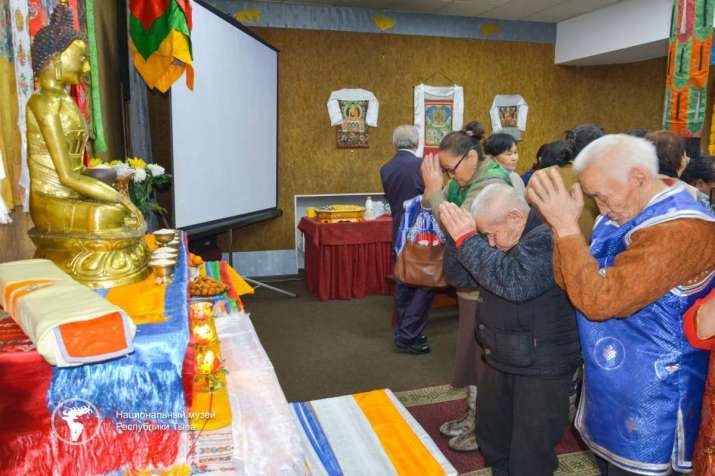
During the opening ceremony for the exhibition, the head lama of Tuva explained how he found the relics: “When I was cleaning the statues, I noticed that one of them was filled from the middle to the top.** I began to explore the statue and found that the lower part was empty, and the upper part was closed. As we know, in Soviet times, all Buddhist statues were destroyed and the metal used for other purposes. While cleaning the statue, a piece of paper with Tibetan script fell out and this is how I found 36 precious relics wrapped in paper. There are many examples in history when a person appears at the right time, finding relics or secret sutras for the revival of a certain tradition. Remembering these stories, I felt joy because of the karmic prerequisites of my birth, connected with the precious relics, which will awaken faith in the Tuvan people. I ask the museum staff to continue the preservation of the precious Buddhist relics of our republic, which have an invaluable state in the world community.” (Централизованная Буддийская Религиозная Организация “Управление Камбы-Ламы Республики Тыва”)
Lobsan Chamzy consecrates the sacred relics every year when they are put on public display at the museum. He performs regular prayers and visitors to the exhibition are able not only to contemplate the Buddhist relics but also to receive blessings and spiritual inspiration. This year, the khamby lama led the prayer ceremony on 22 January, the day the exhibition opened, and also on 1 and 4 February.
The Sacred Relicts exhibition will run until 22 February.
* White Month, the first month of the Lunar New Year, is celebrated across the southern Siberian steppe, Mongolia, and parts of China. It is known as Shagaa in Tuva, Tsagaan Sar in Mongolia, Chagan Sar in Kalmykia, and Sagaalgaan in Buryatia.
** Tibetan Buddhists believe that a Buddha statue should be filled with certain materials, such as rolled mantras, fragrant wood, incense powders, soil from a sacred place, precious pills, etc. and be consecrated by a qualified lama.
See more
Открытие выставки «Драгоценные реликвии» в Национальном музее Республики Тыв (Централизованная Буддийская Религиозная Организация “Управление Камбы-Ламы Республики Тыва”)
Национальный музей им. Алдан-Маадыр














